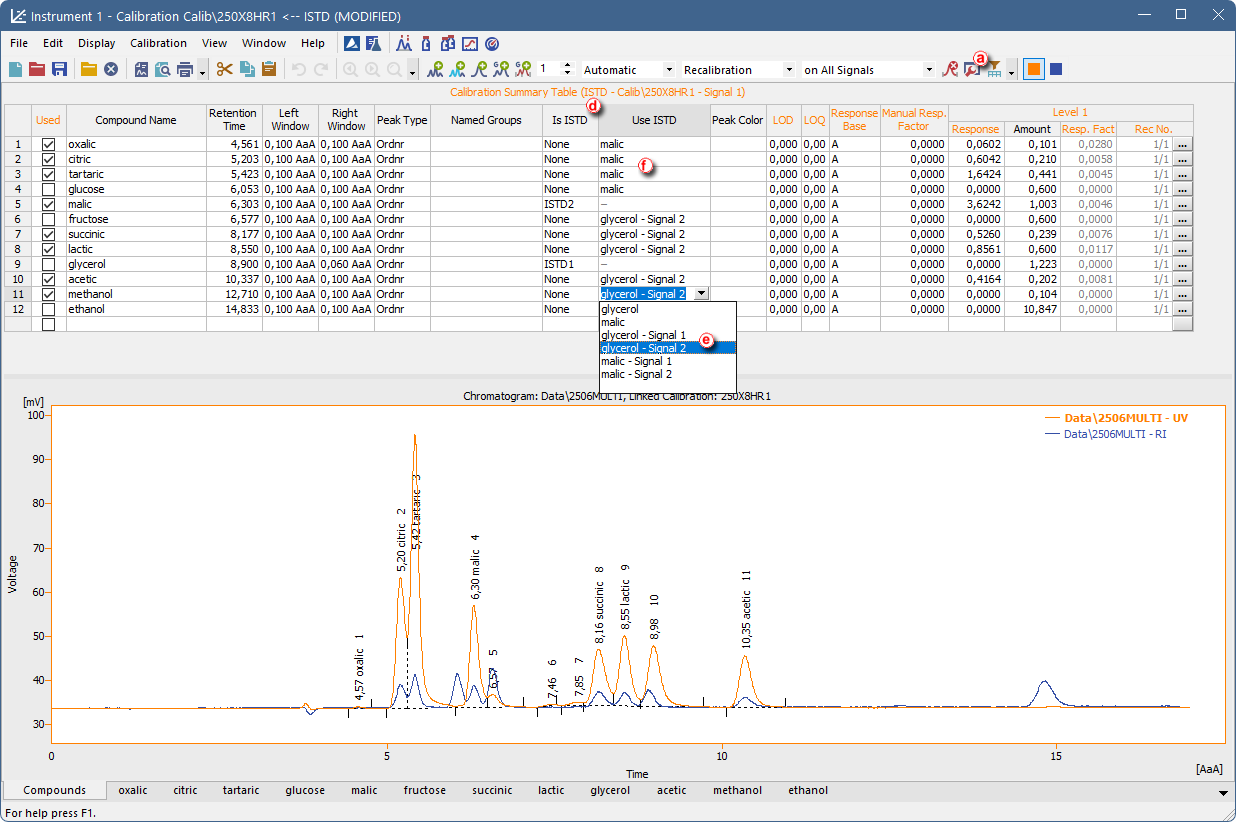In analytical workflows involving multiple detectors or multi-signal setups, it is sometimes necessary to measure the internal standard (ISTD) on a different signal than the analytes. This is especially useful in cases where the ISTD is not detectable in the same signal, such as in ICP-MS.
This section describes how to set up a calibration using an ISTD compound measured on a different signal than the analytes.
- Go to the Calibration Options window (accessible via the
 icon ⓐ in the Calibration window).
icon ⓐ in the Calibration window). - Change the Display Mode to ISTDⓑ.
- Check the Allow ISTD from different signal option ⓒ.
- Confirm the settings by clicking OK.

- Then, fill in the Calibration summary table as described in the Creating a multisignal calibration topic.
In our case, we have a two-signal calibration where Glycerol is detected only on Signal 2, but we want to use it as the ISTD for some compounds also on Signal 1. To contrast the situation, there is a second ISTD – Malic acid – which is detected on both signals, so we want the correction to always use the Malic peak from the same signal as the analyte.
- Mark both Glycerol and Malic as ISTD in the Is ISTD ⓓ column.
- In Use ISTD column expand the dropdown menu. There is list of all compounds set as ISTDs, firstly without the identification of the signal, and then again for every signal present.
- For compounds calculated by ISTD Glycerol, select the Glycerol entry with the Signal 2 identification ⓔ. This means that Glycerol from Signal 2 will be used as ISTD in both signals.
- For compounds calculated by ISTD Malic, select the Malic entry without signal identification ⓕ. That means the malic from the same signal as the analyte will be used as ISTD.

Further work with such a calibration is identical to a standard ISTD calibration - see the Using ISTD in calibration topic for guidance how to measure chromatograms with entered ISTD amounts or topics covering linking calibration to an already measured chromatogram for direct results assessment (see Applying calibration to a chromatogram), or to a method (see Setting a calibration in a method), so the chromatograms measured using this method will be automatically evaluated using the pre-selected ISTD calibration.